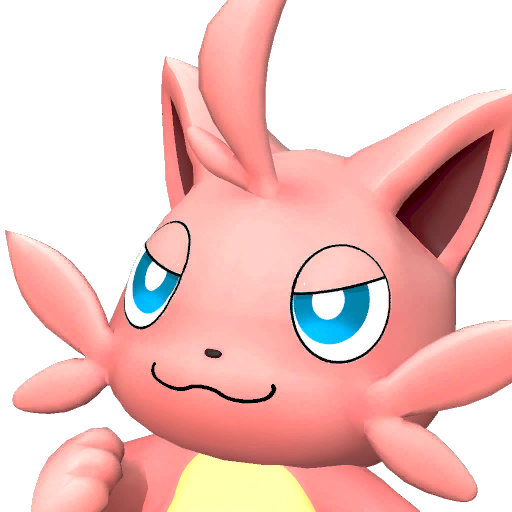Resonance is a vital component of a unit’s stats in Reverse: 1999. However, the tetris-like way resonance is organized might discourage many people from arranging it on their own. The guides you can find on the Internet typically only feature the solution for resonance 10, and on rare occasions resonance 9. It is difficult to find a guide for low level resonance builds, since the workload is too big to be practical. As such, here is a guide to help you understand the basics of resonance organization and hopefully after reading it, you will be able to figure out a good way to find your own solution for your units’ resonance.
There are several different tiles of thought that could be combined to build resonance. They have different stats and lean towards different aspects of a unit’s performance. These aspects are: ATK, DMG, CRIT, DEF. You would need to figure out which aspects are best for who you are building, for it varies from unit to unit.

ATK: Focuses on basic atk stats. Since most damage calculations are based on atk stats, this is a very direct way of improving damage. It works exceptionally well with units with genesis damage, since genesis damage is only affected by atk stats and does not enjoy the various damage multipliers in the game. It also fits most sustain units best, since most healing and shield in the game are based on atk stats as well. Examples include Voyager, Sotheby, Dikke, etc.
DMG: Focuses on dmg bonus. It is one of the major multipliers in the game, calculated as (1+attacker dmg bonus-enemy dmg taken reduction). Since it is a percentage, it provides better dmg increase than basic atk stats under most circumstances. This should be the focus for most dps in the game. Examples include Centurion, A Knight, Eternity, etc.
CRIT: Focuses on crit rate and crit dmg. Crit in this game is genuinely regarded as worse than atk stats and dmg bonus unless you can achieve a high crit rate, since crit dmg in this game has low base multiplier and is often countered by enemies with high crit resistance or crit defense. For this reason, crit build is mostly seen on units that could potentially achieve near 100% crit rate with it. Examples include Lilya, Regulus, Sweetheart, etc.
DEF: Focuses on hp stats and def stats. It is seldom made a main aim for resonance, since the better solution for survivability issues is obviously to level up your sustain unit more. It is used on occasions where the unit needs to tank damage, but more commonly a side product when arranging ATK resonance since the main ATK tiles also have DEF related stats. Examples include Ms. NewBabel, Balloon Party, The Fool, etc.
Below is a summary of the tiles of thought available for organizing resonance, including their stats up to resonance 10, VPC (value per cell) at resonance 10, and what aspects they focus on respectively. It’s not recommended for normal players to upgrade resonance past level 10.
“-”
Smallest tile that only occupies one cell. Purely DEF oriented. Can be used to fill leftover cells that other tiles can’t fit in in a DEF build.
Stats:
LV.1 : hp +1%, dmg taken reduction +0.5%
VPC:
Offensive 0
Defensive 1.42
“+”
Smallest tile that only occupies one cell. Has both DMG and DEF traits. Can be used to fill leftover cells that other tiles can’t fit in in a DMG or DEF build.
Stats:
LV.1 : hp +1%, dmg bonus +0.5%
VPC:
Offensive 0.42
Defensive 1
“D”
A small tile that occupies two cells, mainly providing crit dmg, with some dmg taken reduction to boost. Usually used in a CRIT build when a crit focused unit already has enough crit rate.
Stats:
LV.1 : crit dmg +3%, dmg taken reduction +1%
VPC:
Offensive 0.63
Defensive 0.42
“C”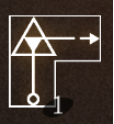
A tile occupying three cells that gives atk stats and crit rate. Most commonly used in CRIT builds where the unit is very dependent on crit rate (e.g., Lilya, who needs 100% crit). Can also be used in ATK builds.
Stats:
LV.1 : atk +1%, crit rate + 1.5%
LV.2 : atk +1%, crit rate + 2%
LV.3 : atk +1.5%, crit rate + 2.5%
VPC:
Offensive 1.02
Defensive 0
“I”
A large 4-cell tile that has hp, atk and mental def. One of the key components of ATK and DEF builds. Used on most occasions except for some CRIT builds, especially when the unit is weak in mental def.
Stats:
LV.1 : hp +2%, atk +1.5%, mental def + 1.5%
LV.2 : hp +2.5%, atk +2.5%, mental def + 2.5%
LV.3 : hp +3%, atk +3%, mental def + 3%
VPC:
Offensive 0.75
Defensive 1.50
“T"
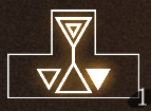
A large 4-cell tile that has hp, atk and reality def. One of the key components of ATK and DEF builds. Used on most occasions except for some CRIT builds, especially when the unit is weak in reality def.
Stats:
LV.1 : hp +2%, atk +1.5%, reality def + 1.5%
LV.2 : hp +2.5%, atk +2.5%, reality def + 2.5%
LV.3 : hp +3%, atk +3%, reality def + 3%
VPC:
Offensive 0.75
Defensive 1.50
“O”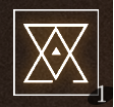
A large 4-cell tile that has atk, reality def and mental def. One of the key components of ATK and DEF builds. Used on most occasions except for some CRIT builds, especially when the unit is weak in def value.
Stats:
LV.1 : hp +2%, reality def + 1.5%, mental def + 1.5%
LV.2 : hp +2.5%, reality def + 2.5%, mental def + 2.5%
LV.3 : hp +3%, reality def + 3%, mental def + 3%
VPC:
Offensive 0.75
Defensive 1.50
“S”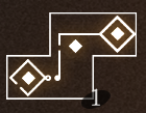
A large 4-cell tile that has crit rate, crit resist rate and dmg bonus. One of the key components of DMG and CRIT builds, especially DMG builds. Very important and frequently used.
Stats:
LV.1 : crit rate +2%, crit resist rate + 1%, dmg bonus + 2%
LV.2 : crit rate +2%, crit resist rate + 1.5%, dmg bonus + 2.5%
LV.3 : crit rate +2.5%, crit resist rate + 2%, dmg bonus + 3%
VPC:
Offensive 1.02
Defensive 0.31
“Z”
A large 4-cell tile that has crit resist rate, crit def and dmg taken reduction. The most important tile for DEF builds, but seldom used in other builds.
Stats:
LV.1 : crit resist rate +3%, crit def + 3%, dmg taken reduction + 3%
LV.2 : crit resist rate +4%, crit def + 4%, dmg taken reduction + 4%
LV.3 : crit resist rate +5%, crit def + 5%, dmg taken reduction + 4.5%
VPC:
Offensive 0
Defensive 2.24
“L”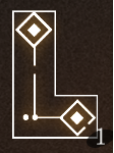
A large 4-cell tile that has crit rate, dmg bonus and dmg taken reduction. One of the key components of DMG and CRIT builds, especially DMG builds. Very important and frequently used.
Stats:
LV.1 : crit rate +2.5%, dmg bonus + 1.5%, dmg taken reduction +1%
LV.2 : crit rate +3%, dmg bonus + 2%, dmg taken reduction +1.5%
LV.3 : crit rate +3.5%, dmg bonus + 2.5%, dmg taken reduction +2%
VPC:
Offensive 1.07
Defensive 0.42
“J”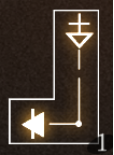
A large 4-cell tile that has crit rate, crit resist rate and crit dmg. The most important tile for CRIT builds, but seldom used in other builds.
Stats:
LV.1 : crit rate +4%, crit resist rate + 1%, crit dmg + 2.5%
LV.2 : crit rate +5.5%, crit resist rate + 1.5%, crit dmg + 3%
LV.3 : crit rate +6%, crit resist rate + 2%, crit dmg + 3.5%
VPC:
Offensive 1.30
Defensive 0.21
The tiles below are known as “main tiles”, each unit will only have one of these, and what combination of the tiles above there will be at your disposal is determined by which main tile the unit has. They provide the most increase in performance and should be first priority no matter what aspects you are aiming for.
“MZ”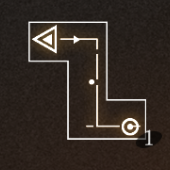
A very balanced offensive composition, with an evenly divided mix of tiles focusing on different aspects. Good for ATK, DMG or CRIT build.
Tiles:
2I 2T 2O 2S 1Z 3L 2J 3C 2D 2+ 2-
“MU”

A strongly defensive composition, with extra tiles focusing on survivability. Great for DEF build, and can also do ATK build.
Tiles:
2I 2T 2O 1S 3Z 2L 2J 3C 2D 2+ 2-
“MT”
A strongly offensive composition, with extra tiles focusing on dmg bonus. Great for DMG build, and can also do ATK or CRIT build.
Tiles:
2I 2T 2O 4S 1Z 2L 1J 3C 2D 2+ 2-
“M+”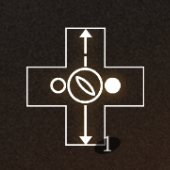
A strongly offensive composition, with extra tiles focusing on crit. Great for CRIT build, and can also do ATK or DMG build
Tiles:
2I 2T 2O 1S 1Z 2L 4J 3C 2D 2+ 2-
Concluding all above, we now have a guideline for resonance organization:
First, put in the main tile.
Then, put in other tiles according to what primary aspect you want to focus on. You can use the type of main tile your unit has as reference.
ATK: prioritize I, T, O.
DMG: prioritize S, L.
CRIT: prioritize J, L.
DEF: prioritize Z, I, T, O.
Finally, fill the rest of the space based on what secondary aspect you want. If you don’t know what fits your unit the best, just do ATK as secondary, since the tiles I, T, O have the highest overall VPC.
Citation:
https://g.nga.cn/read.php?tid=36869713
https://g.nga.cn/read.php?tid=36894407


